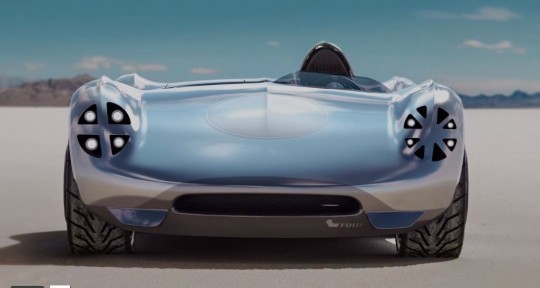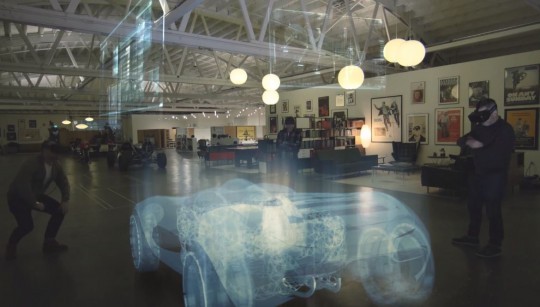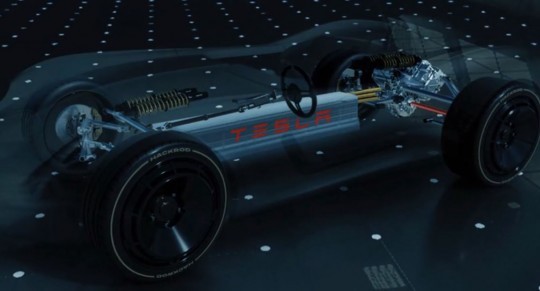















Only recently, say in the past 20 years or so, the drive to share platforms, ideas, engines and even personnel completely transformed the industry, making a complete mess for an outside observer, with little knowledge about the inner workings of the car manufacturing business.
We now have many companies so interlinked with each other that no customer knows what ideas, processes, and parts make up the car they want to buy. For the manufacturers, this business model makes sense, as it ultimately saves them money.
The advent of revolutionary technologies, such as 3D printers, will transform the automotive industry once again. In ways, we can only imagine.TODAY'S CAR MANUFACTURING
Currently, developing a new vehicle takes a lot of time and resources. One has first to draw up the car. Then a prototype needs to be built. The prototype has to be tested. Once approved, it requires a production line, where it could be assembled in large numbers.
Once out the factory door, it needs marketing and transport to the dealers. Advertising follows. After that, it needs maintenance. All processes that require a lot of man hours, tons of money and a well-planned strategy.
Currently, all cars being mass-produced require an assembly line. Those assembly lines need to be updated, or changed, or replaced almost every time a new model enters production.
Sharing tech meant sharing cost for the carmakers, so currently we have several models that are practically the same vehicle, only branded differently. Or mutant cars, that get their heart from one producer, the body from another and the brains from a third-party company. But the bottom line is this – the number of assembly lines required decreases if components are shared among friends and foes. So does the cost.
As for the models rolling off assembly lines, they're pretty much one's guy's idea of a car being sold to millions. Customization options are just fascinating useless things, as a Tiguan will still be a Tiguan, a Mondeo will always be a Mondeo, a Micra will still be a Micra, regardless of the color chosen or the gadgetry you decided to fit on it. Not your car, but their image of a vehicle, one you happened to like in the absence of a better option.
TOMORROW'S CAR MANUFACTURING

The rise of the 3D printer promises virtually zero repetitive car models. The only limit here is imagination. Sure, templates could be used, but that is not a rule, but rather a choice.
As for assembly lines, those will pretty much be extinct as well. With only one printing device and some material, one can build practically any part of a car, then go on to a little bench and assemble it by hand or machine.
There is practically no limit on design ideas. You can create a car that's only yours; your brother can have his, entirely different, your wife hers.
That's because owning a 3D printer and mastering it is like owning your own 30, 40, 50 assembly lines. Punch in the design, feed the thing the material it needs and out comes your dream car. A simplistic view, I know, but that's the bottom line to it.
All you need is a proven car engineer to design the parts and figure out how they fit and work together.THE HACKROD WAY
Hackrod describes itself as a “digital manufacturing company.” It is currently developing a technology that will allow “rapid prototyping of bespoke vehicles solutions and fully realize the concept of the consumer as co-creator in the automotive space.”
Translation: you dream up your car, go to these guys, and they'll build it for you. No iron casting, no complicated machinery, no other car like it. As Hackrod says, “you can create your own car the way you want it, not the way somebody wants to sell it to you.”
No more “you can have any color you want as long as its black,” Henry Ford.

The start-up is in the process of crowdfunding its business model. The idea is simple: build a car, any car, many cars by “using generative design, virtual reality, artificial intelligence, 3D printing, and a cloud-based supply chain.” The company plans to offer car templates to customers, or accept their own ideas as to how a car should look, feel and behave like.
Primarily, customers will be able to choose both cars and options and then watch how their dream cars get born in virtual reality. Cloud-based solutions will handle everything from component sourcing to hardware integration.
The digital platform will handle design and component sourcing, engineering analysis and performance simulation, supply chain management, ordering, and hardware integration, scheduling for assembly and final delivery.
The customers will be kept up to date with the manufacturing process. They will be able to choose options along the way and add custom touches using a game-like interface. They can witness how analysis happens and watch the car design being created. Before production starts, they can even test the car in a video game simulator. At the very end, parts are ordered, and the car is built before their very eyes.
“We could take a crazy vision and design and build it for real—and fast,” says Mouse McCoy, Hackrod's CEO.
PROOF OF CONCEPT – LA BANDITA SPEEDSTER

To prove all of the above can be done, Hackrod is going to build the world's first car designed in mixed reality and engineered by an AI. The vehicle has not yet made it into the real world, but the progress is ongoing.
The first thing Hackrod had to do was to capture the data needed by the AI-powered generative design engine. They used an existing chassis that was scanned as the frame was being tested in the Mojave Desert. The resulting 3D model was then uploaded to the cloud. Using the millions data points gathered by the scan of hundreds of sensors, the AI then was able to generate multiple design options.
For the exterior, no clay modeling was used, but only virtual reality design using Autodesk Fusion 360 that allowed for experimenting directly with a life-size model of the car. The virtual reality realm was also the place where all the testing was made.
So far, Hackrod managed a critical milestone in developing the La Bandita. In the sixth day of 2018, they achieved what they call “full-scale metal 3D-printing,” and claim they can now print a full-scale car in aluminum.
La Bandita is not yet ready, but Hackrod will probably make good progress towards finishing it this year. OTHERS WILL FOLLOW
3D-printed car parts start showing up from more and more car manufacturers, but for now nobody, none of the established names, that is, hasn't announced plans to 3D print an entire vehicle. This type of manufacturing process is still some way from becoming standard, but as the 3D printing technology keeps getting better and better, we're likely to see more and more car makers taking notice.
Like it or not, 3D printing will be the next technological revolution.








